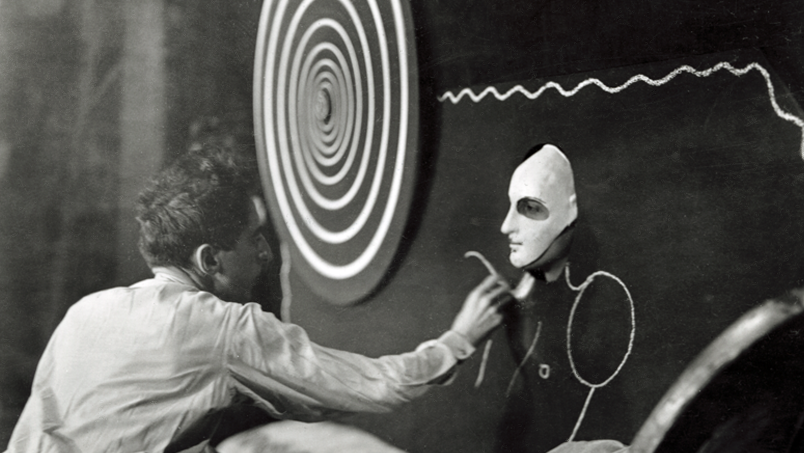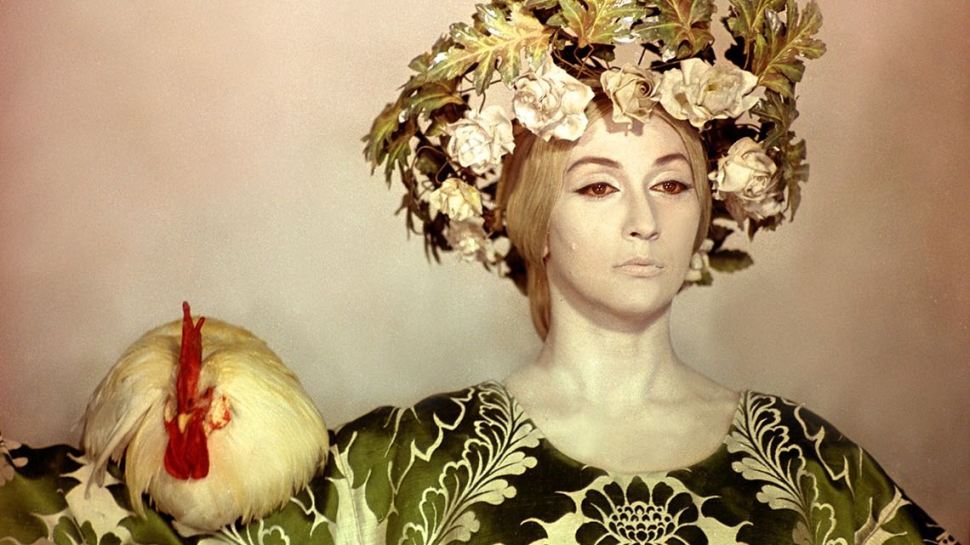Let us take a moment to admire an old tree that stretches itself to the skyline and looks out over the cinema landscape…
With it’s origins deep rooted alongside the earliest moving pictures of the late 19th century, it’s creative arm continues to splinter off in new directions; reinventing itself and challenging our view along the way. If anything, it’s beauty is in it’s unconventionality. It’s when we step away from under it and behold it from another viewpoint that it truly takes our breath away.

Re-evaluating, rewriting, manifesting, disregarding. For the experimental filmmaker and the Avant Garde movement the only rule in cinema is there are no rules. With a necessity to create, the experimental filmmaker seizes the camera with a certain anarchy, not unlike the Dadaist would the canvas. Their spontaneity flows with parallels to such stream of consciousness authors as Faulkner and Joyce.
Using non-linear plots, surrealist imagery, symbolism and motifs many filmmakers have established their reputations from such films, and often on shoestring budgets. And through the likes of such auteurs as Jean Cocteau, Maya Deren, Luis Buñuel and Dziga Vertov, the Avant Garde has transcended it’s title as simply an experimental film and become a recognised genre in itself.
This week Privilege Of Legends takes a walk through the gallery and points out six cinematic masterpieces of the Avant Garde…
Un Chien Andalou (1929)

Rarely does a film come around that evokes such strong sentiment through it’s disjointed imagery and vivid symbolism. A woman has a razor blade held up to her eye that cuts to a juxtaposed image of a cloud splicing the moon. An army of ants stream from the centre of a hand. The product of director Luis Buñuel and artist Salvador Dali’s candid conversations on the peculiarity of dreams, Un Chien Andalou, or The Andalusian Dog is said to be based upon the concept of suppressed human emotions and the surreal world that lies within our own psyche.
Shot over 10 days in La Havre and Paris on 35mm film, the film was financed by Buñuel’s mother and ran under 20 minutes. One of the many ironies behind the production of the film was that Buñuel and Dali had both intended to stir controversy and disgust within the elite and middle class, however it was the very same bourgeoisie who welcomed the film with open arms and praised it upon it’s release.
Man With A Movie Camera (1929)

If there has ever been a film title that better describes it’s subject matter then most would be at a loss to discover it. Soviet director Dziga Vertov’s Man With A Movie Camera is precisely just that: one man with a movie camera documenting the urban life of several cities in what is now Russia and the Ukraine.
With no script or actors, the man with the camera is the protagonist of this monumental experimental film that absorbs the city through it’s lens like a sponge; taking in the goings on of a bustling industrial backdrop.
A pioneer of documentary filmmaking, Vertov inadvertently revolutionised the industry in many ways through his forward-thinking and bold techniques with the camera. Aside from a handful of ambitious and brazen camera set ups, Vertov heightened the film’s impact with double exposed shots, split screens, canted angles, and jump cuts… at times more than one of these techniques were used on one particular shot.
The Blood Of A Poet (1930)
The first film in the Orphic Trilogy released by the acclaimed French playwright, designer, painter and filmmaker Jean Cocteau was to showcase early on the kind of surrealist world this auteur was to introduce to a new audience.

One might interpret The Blood Of A Poet as a painstaking, sensory journey through the artist’s eyes as they surrender themselves, wholeheartedly to the creative process.
At one point we watch as the works literally come to life: a sketch of a face that can move it’s lips, a female statue that communicates with her creator. Much of the set design and visual style bares the signature familiar in much of Cocteau’s later work like smashed mirrors, angelic beings, oxen and equine heads.
Funded by the French nobleman and patron of the arts Charles de Noailles, who gave Cocteau a million francs in finance, the film was perceived by some at the time to have an anti-christian message in it’s subtext and was met with some harsh criticism at the time that delayed it’s release for over a year.
Meshes Of The Afternoon (1943)
One of the most important cinematic pieces of American moving pictures and a telling example of the art movement of New York in the postwar era was the experimental project by the wife and husband team of Maya Deren and Alexander Hammid, Meshes Of The Afternoon.

Shot in bold black and white using a 16mm Bolex camera that Deren had purchased with her father’s inheritance money, the film is a 14 minute piece of revolutionary production techniques, surrealist imagery and bizarre motifs.
Through it’s combination of reverse, slow and stop motion editing, Meshes seems at times to possess a strange sense of being far removed from time and reality. Playing the key role in the majority of her films, Deren is enigmatic as she glides about the set through a montage of superimposed images, multiple exposures and speeds as if in a dream.
In her own words, when asked about Meshes Of The Afternoon her response was:
‘it reproduces the way in which the subconscious of an individual will develop, interpret and elaborate an apparently simple and casual incident into a critical emotional experience.’
Dreams That Money Can Buy (1947)

After Joe signs a lease on a small city apartment it soon dawns upon him that he has a rare gift. He can look into the eyes of another and see deep into their inner self. With this he seizes the opportunity to turn his flat into a psychoanalytical den in which to sell dreams to a handful of troubled neurotics.
Loosely around this plot the director and surrealist artist Hans Richter collaborates with seven artists who each construct a dream sequence that correlates in some way with the story. Dreams That Money Can Buy is a colourful and ambitious attempt at fusing artist’s work under the umbrella of an Avant Garde film, including contributions from the likes of Max Ernst, Fernand Léger, Man Ray, Alexander Calder and Marcel Duchamp.
With a running time of 99 minutes, a modest budget of only $15,000 US, and a crew of predominantly experimental artists and dadaist film theorists, what the the film lacks in it’s editing, lighting and sound is made up for with it’s artistic efforts as a whole.
The Colour Of Pomegranates (1969)

Inspired by the poetry of Armenia’s national hero of folklore and song Sayat-Nova, The Colour Of Pomegranates is filmmaker Sergei Parajanov’s breathtaking vision of the great poet’s life through moving images.
Rich with symbolism and spectacular staging that is yet to be rivalled, each frame is meticulously considered like a piece of priceless art. Shot amongst various historic sites, monasteries, and ancient fortresses around Armenia, Georgia and Azerbaijan, Parajanov’s film is a masterpiece of modern cinema and a revolutionary work of cultural significance.
Heavily scrutinised by Soviet censorship, the film had large sections removed or changed and was for many years held from being distributed outside of Armenia.

For it’s set design and staging alone it deserves to be amongst the greatest films of Satyajit Ray, Ingmar Bergman and Robert Bresson.
According to Michelangelo Antonioni:
‘Parajanov’s Colour of Pomegranates is of stunningly perfect beauty. Parajanov, in my opinion, is one of the best film directors in the world…’